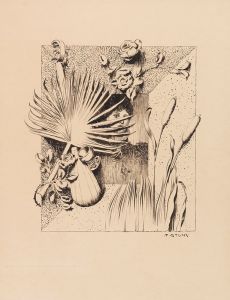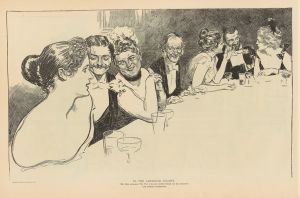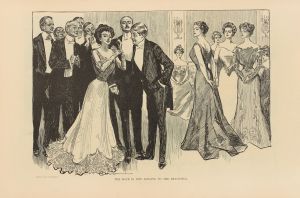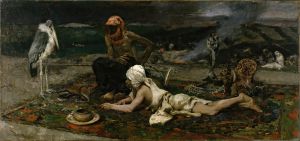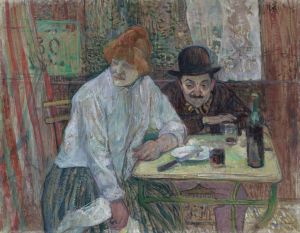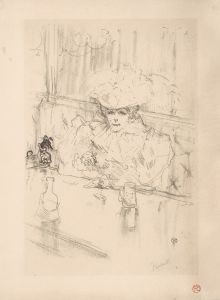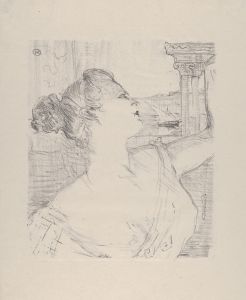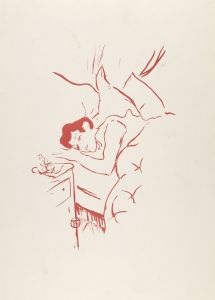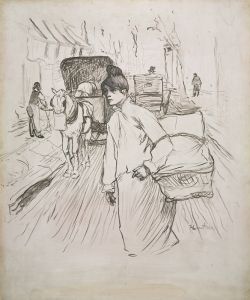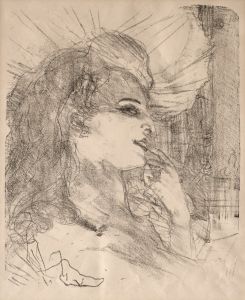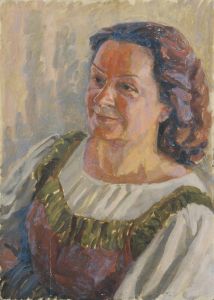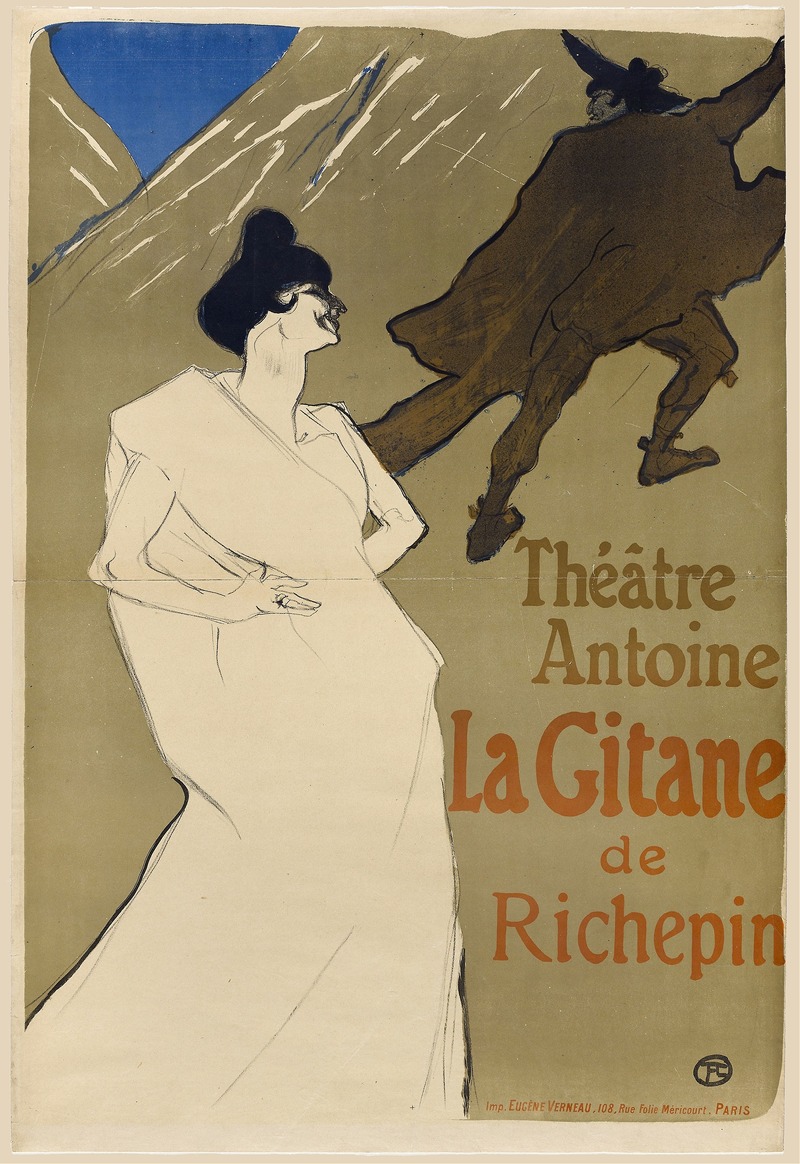
La Gitane
A hand-painted replica of Henri de Toulouse-Lautrec’s masterpiece La Gitane, meticulously crafted by professional artists to capture the true essence of the original. Each piece is created with museum-quality canvas and rare mineral pigments, carefully painted by experienced artists with delicate brushstrokes and rich, layered colors to perfectly recreate the texture of the original artwork. Unlike machine-printed reproductions, this hand-painted version brings the painting to life, infused with the artist’s emotions and skill in every stroke. Whether for personal collection or home decoration, it instantly elevates the artistic atmosphere of any space.
Henri de Toulouse-Lautrec, a prominent French painter, printmaker, and illustrator, is renowned for his depictions of the vibrant and often decadent life of Paris in the late 19th century. Among his diverse body of work is the painting "La Gitane," which translates to "The Gypsy" in English. This piece is a testament to Lautrec's keen interest in capturing the essence of individuals who lived on the fringes of society, a recurring theme in his oeuvre.
"La Gitane" was created during a period when Lautrec was deeply immersed in the bohemian lifestyle of Montmartre, a district in Paris known for its lively nightlife and artistic community. This environment provided Lautrec with a rich tapestry of subjects, from cabaret performers to the marginalized figures of society, which he portrayed with empathy and insight.
The painting "La Gitane" features a woman of Romani descent, a subject that reflects Lautrec's fascination with the exotic and the unconventional. The Romani people, often referred to as gypsies, were a marginalized group in Europe, and their depiction in art was frequently romanticized or stereotyped. However, Lautrec's portrayal is noted for its authenticity and respect, capturing the individuality and strength of the woman rather than reducing her to a mere stereotype.
Lautrec's technique in "La Gitane" is characteristic of his style, which combines elements of Impressionism and Post-Impressionism. His use of bold lines and vibrant colors brings the subject to life, while his attention to detail and composition reveals his deep understanding of human emotion and character. The painting is executed with a fluidity and spontaneity that suggest Lautrec's skill in capturing the essence of a moment.
The background of "La Gitane" is typically sparse, focusing the viewer's attention on the subject. This compositional choice is a hallmark of Lautrec's work, emphasizing the personality and presence of the individual. The woman's expression and posture convey a sense of resilience and dignity, inviting the viewer to engage with her story.
Henri de Toulouse-Lautrec's work, including "La Gitane," is celebrated for its ability to transcend the superficial and delve into the complexities of human experience. His paintings offer a window into the lives of those who were often overlooked by society, providing a narrative that is both personal and universal. Lautrec's legacy as an artist lies in his capacity to portray the beauty and diversity of humanity with honesty and compassion.
"La Gitane" remains an important piece within Lautrec's body of work, reflecting his commitment to portraying the world around him with authenticity and depth. Today, his paintings are housed in major museums and collections worldwide, continuing to captivate audiences with their vivid portrayal of a bygone era. Through works like "La Gitane," Toulouse-Lautrec has secured his place as a pivotal figure in the history of art, celebrated for his unique perspective and enduring impact on the art world.





